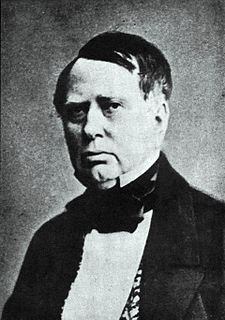 W
WJosé Mariano Martín Buenaventura Ignacio Nepomuceno García de Arista Nuez was a noted veteran of many of Mexico's nineteenth-century wars. He served as president of Mexico from 15 January 1851 to 6 January 1853. He was the first president of Mexico to be born in the 19th century.
 W
WAt the end of the Mexican War of Independence, the Army of the Three Guarantees was the name given to the army after the unification of the Spanish troops led by Agustín de Iturbide and the Mexican insurgent troops of Vicente Guerrero, consolidating Mexico's independence from Spain. The decree creating this army appeared in the Plan de Iguala, which stated the three guarantees which it was meant to defend: religion, independence, and unity. Mexico was to be a Catholic empire, independent from Spain, and united against its enemies.
 W
WThe Azteca-class patrol vessel are a class of patrol vessels in service with the Mexican Navy. They were designed and built by the British companies T.T. Boat Designs Ltd; Ailsa Shipbuilding Co. Ltd., Scott & Sons, Bowling; Lamont & Co. Ltd. and Vera Cruz and Salina Cruz Shipyards for the Mexican Navy from 1976 to 1980. They are multi-role patrol craft with good nautical characteristics. Original units were powered by Paxman diesels of either 3,600 hp (2,700 kW) or 4,800 hp (3,600 kW). Original units were named with pre-Hispanic tribal names.
 W
WARM Baja California (PO-162) is a Oaxaca-class patrol vessel, constructed by and for the Mexican Navy.
 W
WThe Battle of El Maguey was a battle of the War of Mexican Independence that occurred on 2 May 1811 at El Maguey, in the State of Aguascalientes. The battle was fought between the royalist forces loyal to the Spanish crown, commanded by General Miguel Emparan, and the Mexican rebels fighting for independence from the Spanish Empire, commanded by Ignacio López Rayón. The battle resulted in a victory for the Spanish royalists.
 W
WThe Battle of El Veladero was a battle of the War of Mexican Independence that occurred from 1810 through 30 April 1811 at Cerro El Veladero, Acapulco de Juárez. The battle was fought between royalist forces, loyal to the Spanish crown, commanded by Juan Antonio Fuentes, and Mexican rebels, commanded by José María Morelos and Rafael Valdovinos, fighting for independence from the Spanish Empire. The rebels won.
 W
WThe Battle of Zitlala was a battle of the War of Mexican Independence that occurred on 26 October 1812 in the area around Escamela, Ixtaczoquitlán, Veracruz. The battle was fought between the royalist forces loyal to the Spanish crown, and the Mexican rebels fighting for independence from the Spanish Empire. The battle resulted in a victory for the Mexican rebels.
 W
WThe Battle of La Chincúa was a battle of the War of Mexican Independence that occurred from 19 April through 28 May 1813 at a ranch at Tonalá, Chiapas. The battle was fought between the royalist forces loyal to the Spanish crown, commanded by General Miguel Dambrini, and the Mexican rebels fighting for independence from the Spanish Empire, commanded by Mariano Matamoros y Guridi. The battle resulted in a victory for the Mexican rebels.
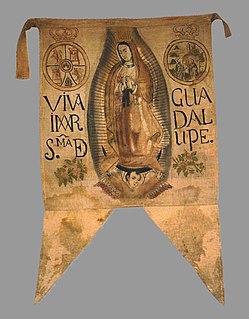 W
WThe Battle of Llanos de Santa Juana was a battle of the War of Mexican Independence that occurred on 12 July 1811 in the area around Cuauhtémoc, Colima known as Llanos de Santa Juana. The battle was fought between the royalist forces loyal to the Spanish crown and the Mexican rebels fighting for independence from the Spanish Empire. The Mexican insurgents were commanded by General José Calixto Martínez y Moreno and the Spanish by Colonel Manuel del Río. The battle resulted in a victory for the Spanish royalists.
 W
WThe Battle of Puerto de Piñones was a battle of the War of Mexican Independence that occurred on 1 April 1811 at Puerto de Piñones, Coahuila. The battle was fought between the royalist forces loyal to the Spanish crown, commanded by José Manuel de Ochoa, and the Mexican rebels fighting for independence from the Spanish Empire, commanded by Ignacio López Rayón. The battle resulted in a victory for the Mexican rebels.
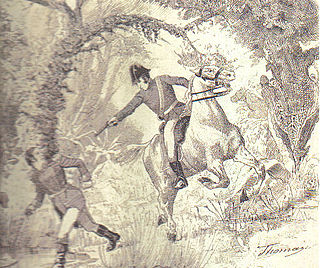 W
WThe Battle of Puruarán was a battle of the War of Mexican Independence that occurred on 5 January 1814 in the area around Puruarán, Michoacán. The battle was fought between the royalist forces loyal to the Spanish crown and the Mexican rebels fighting for independence from the Spanish Empire. The Mexican insurgents were commanded by Mariano Matamoros y Guridi and the Spanish by Agustín Cosme Damián de Iturbide y Arámburu who would later go on to become the Mexican emperor, and by Ciriaco del Llano. The battle lasted approximately one hour and resulted in a victory for the Spanish Royalists.
 W
WThe Battle of Tecualoya was a military action of the Mexican War of Independence fought between 17–20 January 1812 in the canyons of Tecualoya, Mexico. The battle was fought between the royalist forces loyal to the Spanish crown and the Mexican rebels fighting for independence from the Spanish Empire. The Mexican insurgents were commanded by General Hermenegildo Galeana and the Spanish by Rosendo Porlier y Asteguieta. The battle resulted in a victory for Spanish loyalists.
 W
WThe Battle of Temalaca was a battle of the War of Mexican Independence that occurred on 5 November 1815 in the area around Temalaca, Puebla. The battle was fought between the royalist forces loyal to the Spanish crown and the Mexican rebels fighting for independence from the Spanish Empire. The Mexican insurgents were commanded by José María Morelos and the Spanish by Manuel de la Concha. The battle resulted in a victory for the Spanish Royalists.
 W
WThe Battle of Tenancingo was a military action of the Mexican War of Independence fought on 22 January 1812 on the outskirts of Tenancingo de Degollado, Mexico. The battle was fought between the royalist forces loyal to the Spanish crown and the Mexican rebels fighting for independence from the Spanish Empire. The Mexican insurgents were commanded by General José María Morelos y Pavón and the Spanish by Rosendo Porlier y Asteguieta. The battle resulted in a victory for the Mexican rebels.
 W
WThe Battle of Tenango del Valle was a battle of the War of Mexican Independence that occurred in May 1812 on the outskirts of Tenango del Valle, State of Mexico. The battle was fought between the royalist forces loyal to the Spanish crown, and the Mexican rebels fighting for independence from the Spanish Empire.
 W
WThe Battle of Zacatecas was a military action of the Mexican War of Independence fought on 15 April 1811 at Zacatecas, Zacatecas. The battle was fought between the royalist forces loyal to the Spanish crown and the Mexican rebels fighting for independence from the Spanish Empire. The Mexican insurgents were commanded by General Ignacio López Rayón and the Spanish by José Manuel de Ochoa. The battle resulted in a victory for rebel forces.
 W
WThe Battle of Zitácuaro was a battle of the War of Mexican Independence that occurred on 2 January 1812 in the area around Zitácuaro, Michoacán. The battle was fought between the royalist forces loyal to the Spanish crown and the Mexican rebels fighting for independence from the Spanish Empire. The Mexican insurgents were commanded by General Ignacio López Rayón and the Spanish by Félix María Calleja. The battle resulted in a victory for the Spanish Royalists even in the face of overwhelming odds.
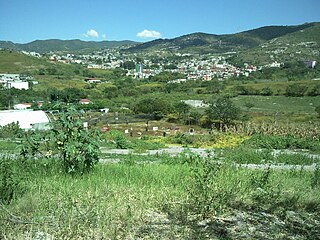 W
WThe Battle of Zitlala was a battle of the War of Mexican Independence that occurred on 4 July 1812 on the outskirts of Zitlala, Guerrero. The battle was fought between the royalist forces loyal to the Spanish crown, and the Mexican rebels fighting for independence from the Spanish Empire. The battle resulted in a victory for the Mexican rebels.
 W
WFelipe Berriozábal was a Mexican politician, engineer and military leader. He participated in the Reform War and in the fight against French Intervention in Mexico. He was a member of president Benito Juárez's cabinet, serving as Secretary of War and Secretary of Marine, Berriozábal also served during Porfirio Díaz's government. He was a commander of the Mexican Army and member of the Chamber of Deputies. His remains were buried at the Panteón de Dolores in Mexico City, in the Rotunda of Illustrious Persons on January 12, 1900; shortly after his death.
 W
WOthón Pompeyo Blanco Núñez de Cáceres was a Mexican Marine and the founder of the city of Chetumal who served as undersecretary of the Mexican Navy from 1941 to 1946.
 W
WJosé Inés García Chávez was a Mexican military man and bandit who participated in the Mexican Revolution.
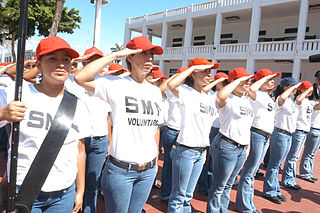 W
WMilitary Service in Mexico currently involves all males reaching the age of eighteen years. Selection is made by a lottery system using the following color scheme: those who draw a black ball must serve as "availability reservists", that is, they are not required to perform any activities whatsoever and will receive their discharge card at the end of the year.
 W
WJosé Santos Degollado Sánchez was a Mexican Liberal politician and military leader. During his service in the Mexican Army, Degollado fought against López de Santa Anna and later alongside Benito Juárez. He was deputy, and later governor of the state of Michoacán. During Benito Juárez's presidency he served as Secretary of War and Navy and as Secretary of External Affairs. Degollado was a colleague of Melchor Ocampo and fought by his side in many battles. His remains were interred at the Panteón de Dolores in Mexico City, in the Rotunda of Illustrious Persons on November 26, 1936.
 W
WARM Durango (PO-151) is a Durango-class patrol vessel in the Mexican Navy with a main 57 mm gun turret and a helicopter landing pad, currently primarily used to fight drug cartels. It is also armed with SA-18 Grouse missiles. Like other ships of this class, it was designed and built in Mexican dockyards, and is sometimes referred to as a compact frigate. It was named after the Mexican state of Durango
 W
WThe First Battle of Agua Prieta was fought between the supporters of Francisco Madero and federal troops of Porfirio Díaz in April 1911, at Agua Prieta, Sonora, in the initial phase of the Mexican Revolution.
 W
WThe ARM Guanajuato (PO-153) is a Durango-class oceanic patrol vessel in the Mexican Navy with a 57mm main gun turret and a helicopter landing pad, currently primarily used for drug interception and maritime security in Mexican territorial waters. It is also armed with SA-18 Grouse missiles. Like other ships of this class, it was designed and built in Mexican dockyards, and is sometimes referred to as a compact frigate. It was named after the Mexican state of Guanajuato.
 W
WRodolfo Herrero was a Mexican military officer, noteworthy for his participation in the Mexican Revolution of 1910 to 1920. He is generally believed to be the officer responsible for the death of President Venustiano Carranza.
 W
WARM Huracán (A-301) is a missile boat in the Mexican Navy. Previously the Israeli Navy Sa'ar 4.5-class missile boat INS Aliya, it was bought by Mexico for the Mexican Navy. Press reports indicates that the Israelis removed the Harpoon missile systems prior to the sale, though the Gabriel anti-ship missile systems were included in the package.
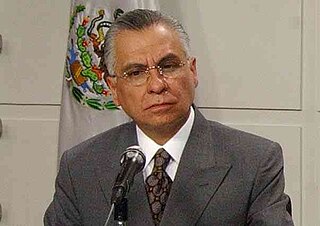 W
WRafael Macedo de la Concha is a Mexican army general and former Attorney General in the cabinet of Vicente Fox.
 W
WJosé Tomás de la Luz Mejía Camacho, better known as Tomás Mejía, was a Mexican soldier. He was of Otomi indigenous origin and came from a humble background, studying in the local rural school. He was a loyal Catholic siding with the conservatives during the Reform war and later the Second French Intervention.
 W
WThe modern Mexican Legion of Honor is an order of merit awarded to soldiers, veterans, and others who have made outstanding contributions to the national defense, security, or sovereignty of Mexico. An earlier, post-revolutionary version was organized as a military reserve force.
 W
WIn Mexico, both the Army and Navy have special forces groups or elite units.
 W
WARM Netzahualcóyotl (D-102), a Quetzalcóatl-class destroyer, is one of two destroyers in the Mexican Navy. Netzahualcóyotl was originally USS Steinaker, a Gearing-class destroyer. Mexico purchased Steinaker from the United States Navy in 1982, and renamed it after the Acolhua polymath Nezahualcoyotl. The destroyer was modified by the Mexican Navy, and in its present configuration it has a helicopter landing pad and an ASROC anti-submarine missile system. Netzahualcóyotl is used in drug interdiction and training missions for cadets from the Mexican Naval Academy, sailing annually up to San Francisco, California, in the United States.
 W
WLauro Villar Ochoa was a Mexican military general who is known for defending the National Palace of Mexico and Francisco I. Madero's administration, along with Ángel Ortiz Monasterio, from the rebellious attacks of the general Bernardo Reyes of the Ten Tragic Days in 1913. He also fought in the French Intervention and against the empire of Maximilian I of Mexico.
 W
WToribio Ortega Ramirez (1870–1914) was a leading general in the Mexican Revolution. He was born on April 16, 1870, in Coyame, Iturbide district, in the State of Chihuahua.
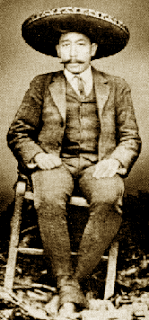 W
WManuel Palafox was a Mexican politician, soldier and intellectual.
 W
WARM Romero (PO-144) is a Sierra-class offshore patrol vessel of the Mexican Navy.
 W
WThe Sierra-class corvettes are intended mainly for interception of drug smugglers, Exclusive Economic Zone (EEZ) patrol, and countering terrorism. The class comprises four ships with the lead ship ARM Sierra (P-141) commissioned by the Mexican Navy in 2000.
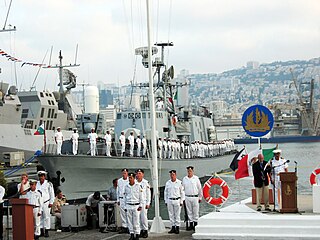 W
WARM Tormenta (A-302) is a missile boat in the Mexican Navy. Previously a Sa'ar 4.5-class missile boat in the Israeli Sea Corps named INS Geula, it was bought by Mexico and placed under control of the Mexican Navy. Its sister ship is ARM Huracán.
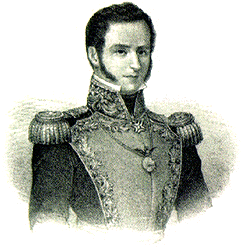 W
WJosé María de Tornel y Mendívil (1795–1853) was a 19th-century Mexican army general and politician who greatly influenced the career of President Antonio López de Santa Anna.
 W
WTomás Urbina Reyes was a general during the Mexican Revolution who allied with Pancho Villa and Emiliano Zapata.
 W
WGerardo Clemente R. Vega García is a Mexican General who served from 2000 to 2006 as Minister of Defense.
 W
WARM Veracruz (PO-151) is a Durango-class patrol vessel in service with the Mexican Navy with a 57 mm main gun turret and a helicopter landing pad, currently primarily used to fight drug cartels. It is also armed with SA-18 Grouse missiles. Like other ships of this class, it was designed and built in Mexican dockyards, and is sometimes referred to as a compact frigate.